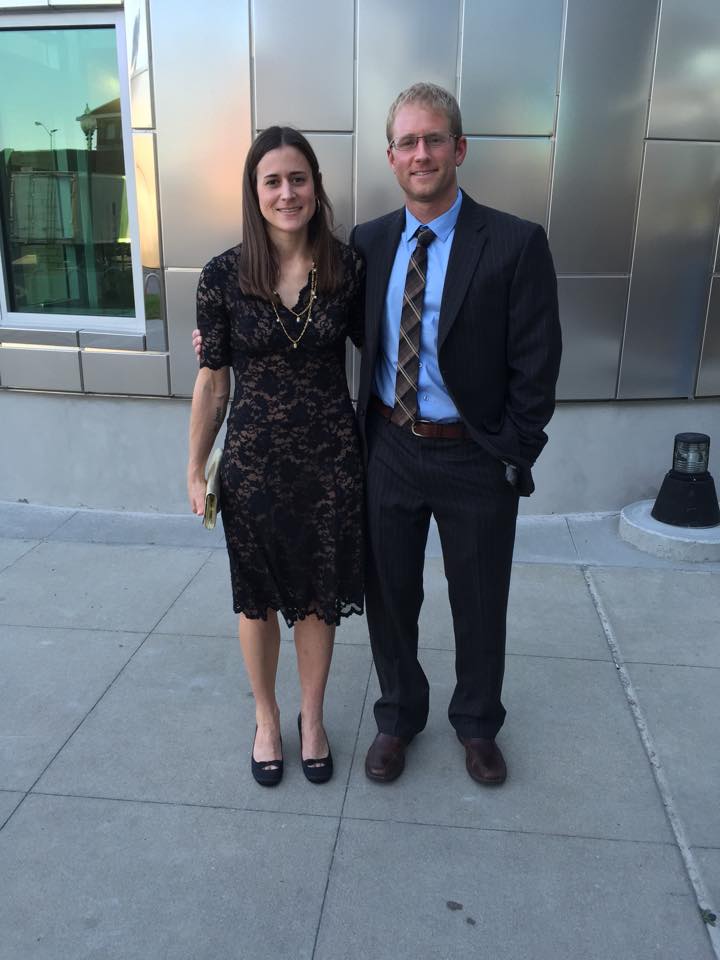Getting THE GIGGLES at the dermatologist with my wife
“Looks like you have a pimple right here,” the woman placed her finger right in the middle of my wife Annie’s forehead.
Annie and I have been together for 19 years (since high school), and I know there’s nothing my wife loves more than when I point to one of the zits, she so rarely gets, and say, “You have a zit!” She typically reciprocates by pointing out one of my few flaws.
The woman, a dermatologist, continued to offer her professional opinion of where my perfect wife was less than perfect. She delivered each judgement in the tone of a straight-faced Saturday Night Live character.
Perfect as she is to my loving eyes, I couldn’t look at Annie any longer. I felt them coming on, the unstoppable, involuntary force known as The Giggles. My insides began shaking, but I was able to keep the tremors from reaching the surface.
I directed my mind elsewhere, forcing myself to ponder the thickness of the clinical tile or exactly how Coolsculpting works. It was no use. The Giggles were still there.
“You are a grown man. You are 36-years-old. A father of two. Keep it together, man!” I gave myself an internal pep talk that got me through Annie’s examination.
Then it was my turn.
“You have a pimple on the back of your neck right here,” the dermatologist told me. I took a deep breath. If I laughed, I knew I would have be laughing at my own zit. Somehow that seemed less offensive than laughing at Annie’s. The Giggles crept toward the surface.
“And right here,” she said. “You seem to have a mole on your back, and . . . there are a few black hairs growing out of it.”
That was it. I couldn’t fight any longer. The visible shaking started at my belly and climbed to my shoulders.
That’s the first I noticed it. Annie gave a stifled laugh too. We were both fighting The Giggles.
The Science of Love & Laughing
Neuroscientist Sophie Scott gave a TED Talk titled “Why We Laugh” in which she points out several findings that were relevant to our situation at the dermatologist.
As we get older we become better at deciphering real laughter from fake laughter. We hit our peak at deciphering between the two in our late 30s. (Annie and I are nearing our “late 30s.”)
Real laughter is more contagious, but as we get better at reading laughs, we’re less likely to catch a laugh. So as we age there needs to be more than just a funny situation for a laugh contagion to break out among humans. There needs to be a strong social connection.
Scott pointed out the research of Robert Levenson at UC-Berkeley. Levenson brought married couples into his lab, hooked them up to a polygraph machine to monitor their stress levels, and then asked them a series of stressful questions, such as: “What annoys you about your wife?”
The polygraph found that the couple’s stress immediately spiked, but the couples who managed that feeling of stress with laughter immediately became less stressed. Levenson concluded that couples who laughed reported higher levels of satisfaction in their relationships and that they stayed together longer.
In her TED Talk Scott says that we are thirty times more likely to laugh when we are with someone. I’ve been with Annie since I was a teenager and without even glimpsing at each other we gave each other The Giggles.
If that’s not love, I’m not sure what is.
Annie and I have grown up together, are raising two kids together, and have made a life together, but on the way out we agreed that no longer could we visit the dermatologist together.
Here’s Sophie Scott’s talk:


Let your voice be heard!